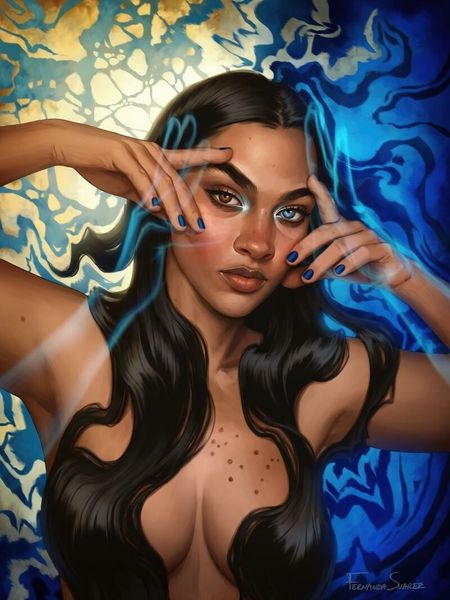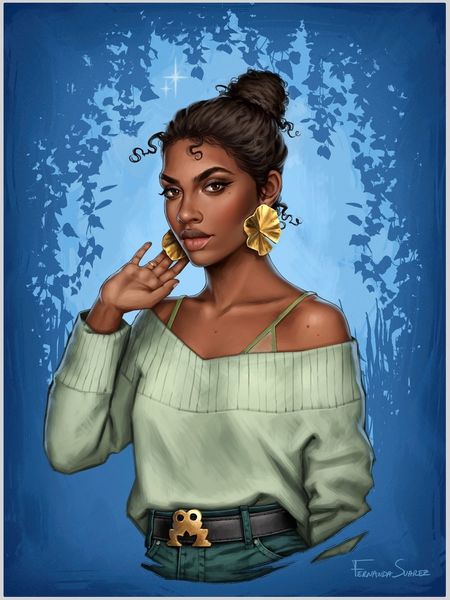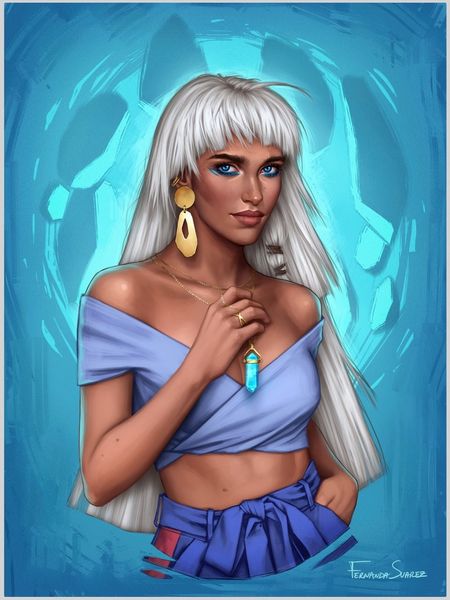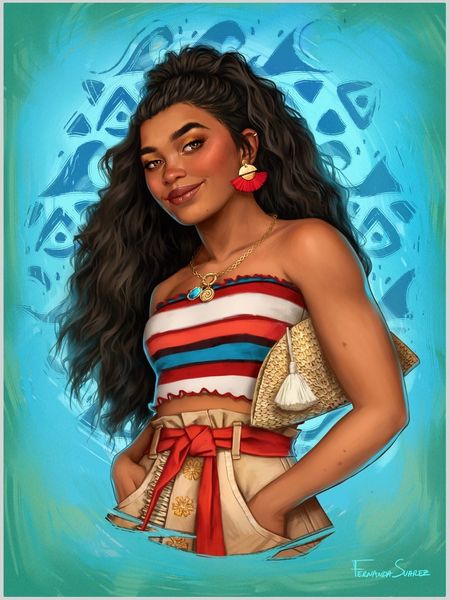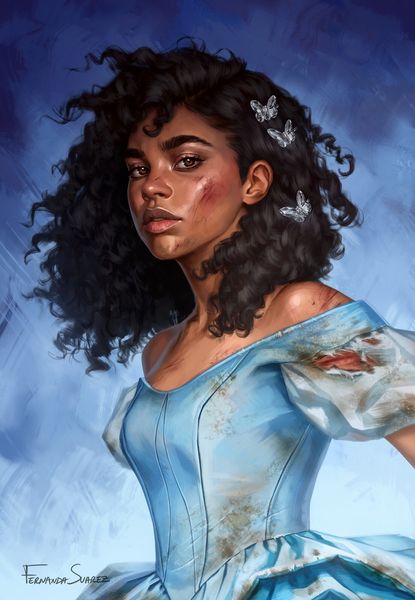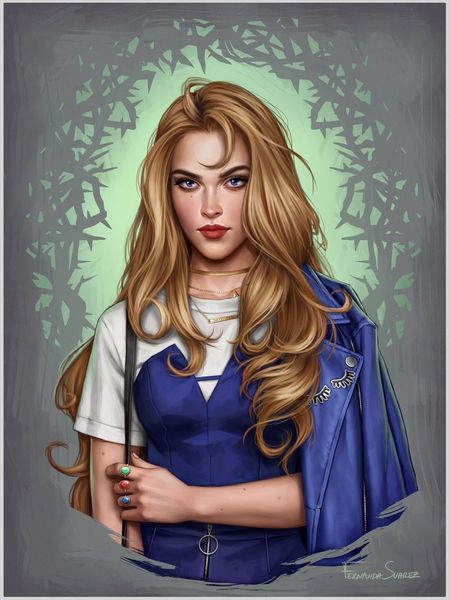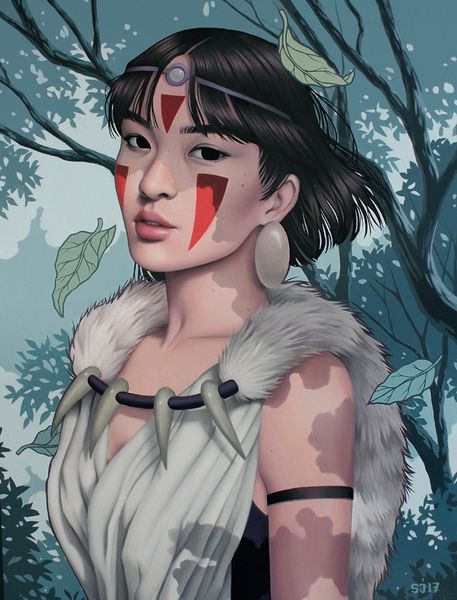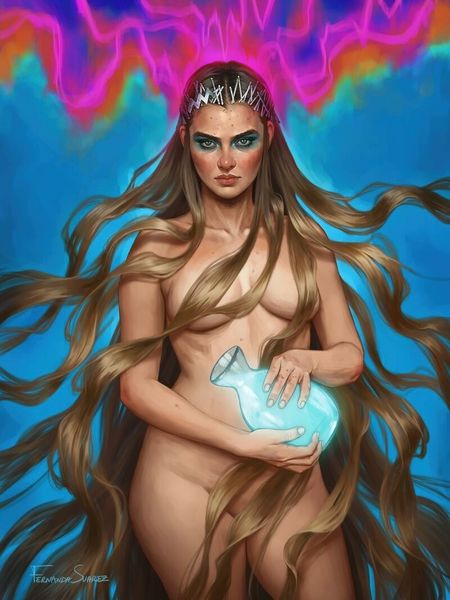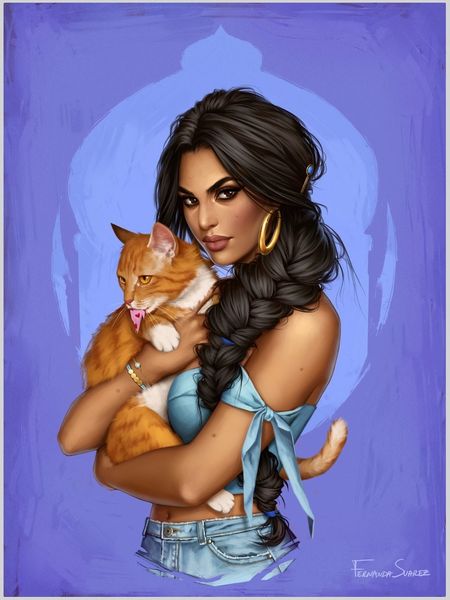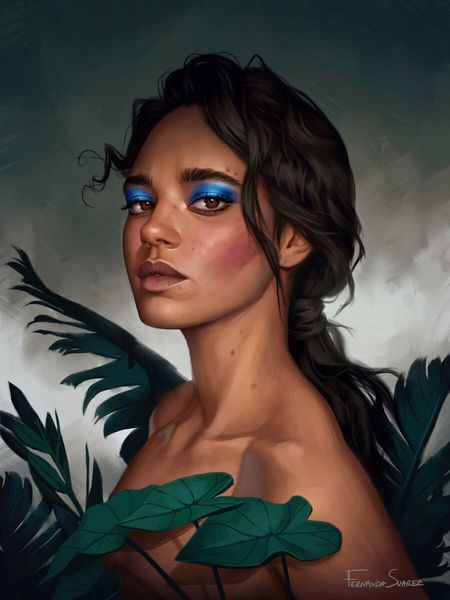
painting
#
portrait
#
contemporary
#
painting
#
figuration
Copyright: Modern Artists: Artvee
Curator: This contemporary portrait, "Pocahontas" by Fernanda Suarez, is immediately striking. The artist’s deft use of color and shadow creates a palpable sense of depth. Editor: Yes, the initial impression is very polished, almost digitally smooth. I find myself drawn to the subject's gaze; it projects a compelling mix of serenity and strength. However, the romanticism bothers me somewhat. Curator: I appreciate that initial unease because it gestures at an issue of cultural appropriation. Suarez is re-imagining a historical figure viewed through a very colonial lens. The subject’s face and adornment are presented in a way that wrestles with historical representation of Indigenous women. How does this modern representation begin to undo some of that violence? Editor: Well, if we stick with formalism for a moment, the artist relies heavily on the contrast between the warm skin tones and the cool blues of the jewelry and background. That tension definitely adds visual interest and contributes to the overall captivating presence. Curator: Absolutely, and those colors speak to the earth tones traditionally associated with Pocahontas's culture while also employing a very modern and almost ethereal feel. But the presentation also opens a dialogue. Is the work contributing to stereotypical imagery or does the contemporary lens add a critical layer that questions past representations? It becomes a conversation about visibility, agency, and the artist's role in retelling a contested story. Editor: True. I hadn't considered how the painting invites discourse. However, the composition does follow a well-worn formula—the single figure portrait, a soft, slightly blurred backdrop… it flattens any deeper semiotic interpretation with overdone visual tropes. Curator: But that accessibility could be deliberate, aiming to make the piece more readily available for a wider audience. Suarez encourages viewers to contemplate both the historical figure and the artistic choices made in her depiction, and in the end, forces the audience to reckon with questions of identity and representation. Editor: Perhaps. Still, from a purely formal standpoint, I think it's an interesting work. I enjoyed discussing how those formal choices impact the reading of this artwork, particularly when considered with context. Curator: Agreed, looking closely at the artmaking process is crucial in such cases and it informs so many crucial narratives. It provides entry into complex ideas that demand acknowledgement and deep conversation.
Comments
No comments
Be the first to comment and join the conversation on the ultimate creative platform.
